David Reichelt has been through a hell of a lot in his life. He was both a music major and a theater major. He was a professional magician. He was a medic in the military and served in Iraq. He had to save lives, and he was nearly blown up a couple of times in his vehicle. He tried his had at making films. He cleaned swimming pools. And he was a valet parking attendant. But one of the constants in his life was games.
He grew up with computer games like Lode Runner, and he loved playing Nintendo games. At age 33, he started making games, while still parking cars. in 2013, he taught himself to make games using a creation tool dubbed Game Salad, and later switched to Build Box. In six months, he churned out 40 games. The most he ever made from those games was $40 a month. He was around $80,000 in debt.
And the 41st was Color Switch, a very simple game where you had to match colors with a bouncing ball in order to progress.
Now that game has been downloaded 200 million times. For the first two years, he worked with publisher Fortafy Games. But now the licensing rights have reverted to Reichelt. After the licensing deal ended, Fortafy pulled the game off the app stores, and now he’s relaunching Color Switch with a whole new set of improvements.
I spoke with Reichelt about his adventure and how he taught himself to be creative at game design. He’ll be speaking at our upcoming GamesBeat Summit 2018 event in Mill Valley on a panel about the future of creativity. I think it will be a fascinating session.
“Every technique is based on the concept of conceptual blending,” he said, talking about creativity. “When you take two unrelated concepts and put them together to make a new concept, you blend them together and have a new hybrid idea. If you think about it, it works on a biological level. Two parents create a child.”
Here’s an edited transcript of our interview.

Above: David Reichelt now owns the rights to Color Switch.
GamesBeat: How did this all get started for you? What’s your background like?
David Reichelt: We had a neighbor who lived a couple of streets down the road, when I was about five years old. They had a computer, and we didn’t have a computer or any kind of gaming system. My mom became friends with this lady, who we’re still friends with today, and they had a computer and all these computer games. I’d go to their house all the time and play games like Lode Runner. I don’t remember if it was a Commodore 64. It was something with floppy discs. I was too young to recall. This is about 1984, 1985.
My dad got us a Nintendo when I was nine, so that would have been about 1988. I grew up playing Nintendo games. To this day Nintendo is still my favorite platform. I have all their systems. But I’ve been playing games ever since I was five years old.
I didn’t start developing or designing games until 2013, though. I went on this journey trying to figure out what I wanted to do with my life, and I didn’t really get there until I was 33, which is when I started designing games. In between, I went into the military. I was a music major. I was a theater major. I worked as a professional magician for a couple of years. I’m still a member of the Magic Castle. I like performing, but just for fun. I went through life trying a lot of different things. If I didn’t feel like I was passionate about something, I would go search for something else. I was always curious.
In 2013 a friend of mine that I met through the theater program in Cal State Northridge, she moved out of her apartment. I remember she had a Facebook posting asking if someone wanted to take over her lease. I was in Simi Valley at the time, my hometown, which is where I live now. I have a house out here. At the time I was working on my magic career, and she was only five minutes from Hollywood, so I decided to move out there. It was the best decision ever, because her roommate, who was still there—the first day I came out of my room he was sitting there at his computer making a video game.
As curious as I usually am, I went up and asked what he was doing. He said, “I’m making this game and I’m going to put it on the app store. I outsource some of the development and the artwork and tell people how to make this.” I guess I always assumed you had to have advanced programming skills to do anything like that. I remembered a book I had read, the Rich Dad/Poor Dad book, where he talked about creating systems of passive outcome. I thought, “Okay, this is something he’s talking about, and I’d enjoy doing it.” If you can make an app that does well, then that’s creating a system like that, and I’d been playing games my whole life.
Filmmaking was another thing I’d been working on at the time, so I had all this filmmaking gear, like $8,000 worth of cameras and things. I sold all of that to finance my first game, which came out in early 2014. I developed games for a couple of years and didn’t make any money with any of them. I developed about 40 games and the most I ever made was about $40 a month. I had all these games on the Nook app store, the Barnes and Noble app store, and then their app store closed and all my games went down with the Titanic.
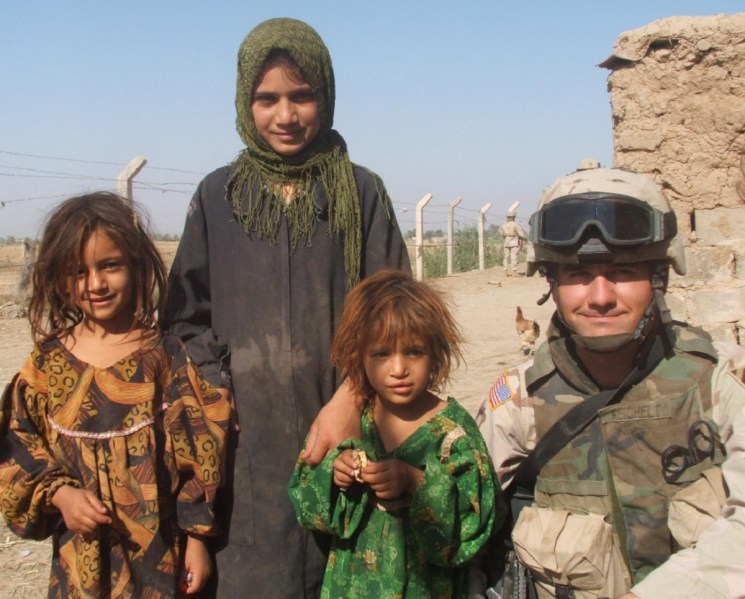
Above: David Reichelt served in Iraq as a medic.
GamesBeat: How much time did each one of those take you?
Reichelt: I literally stopped having a social life. I stopped doing everything so I could focus on this. The first game, I outsourced the development and it took about six months to make a game that, with my knowledge now, would only have to take a week or two. But it took six months and $4,000. They fleeced me pretty good on that one. That ended up making $75. Not too bad of an ROI.
When I had that failure I thought, “Well, how can I do this better next time? I’ll learn how to make games myself.” I found this software called Game Salad. It’s almost as simple to use as a Powerpoint type of software. You could make a really simple game a lot quicker than learning how to program. I spent about a month learning Game Salad, and then over the next six months I made 40 games. I would spend, on average, 15 hours on my computer each day building games, real simple games.
My day job was cleaning swimming pools. I’d get up at 5 a.m., go clean pools until 10 a.m. or 12 p.m., and have most of the day left to be at my computer. My last job I was a valet and I could make my own schedule, so it was the same thing. I could make enough money to pay my rent, and then just spend the rest of my time at home making video games.
GamesBeat: You didn’t have a whole lot of money saved up from anything?
Reichelt: No. In fact, the exact opposite. I think I was about $80,000 in debt on different credit cards and school loans and things. I’d make my rent, but I’d always get calls from credit card companies because I hadn’t made payments in six months. My credit was not very good at the time. I was under a lot of financial pressure, but I was determined. I felt I had found something I could excel at. As frustrating as it was a lot of the time in the first two years—I had all these bouts of depression and whatnot, but I stuck to this plan of learning and applying everything I could for game design until I made something that enabled me to do it full time.
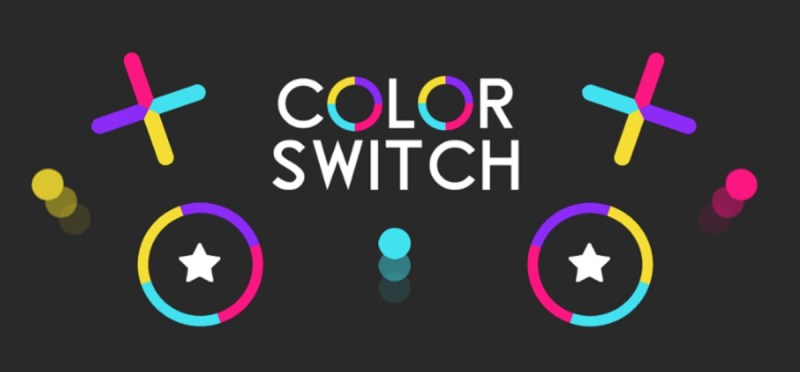
Above: Color Switch logo
GamesBeat: You said you were in the military as well?
Reichelt: Right. I was a music major at the time. I didn’t want to be a music major anymore. I was in Bakersfield, California. We had moved out there from Simi Valley when I was 11. I just found myself in a spot where I didn’t want to be a music major, because I couldn’t see myself doing anything having to do with that knowledge. I didn’t have any money to restart. So I thought, “Well, my brother and sister joined the military, and they’re traveling and earning money for school,” and I decided to go that route.
I just happened to choose the one where they’re going to send you to the desert. I joined as a combat medic. I went to Iraq in 2005. But that was a great experience. I learned a lot from having that job, having to treat people. I was in the military officially from 2003 to 2011. It’s been a while.
In Iraq there was no front line. You have a base, and when you’re outside of the base, traveling around, you’d hear bombs go off every now and then. Any day, you’d go out and hear something go off in the distance. You get trained to look for things that could be IEDs, improvised explosive devices, along the road. The training basically tells you anything can be a bomb – a crater, a dead cow, a can, anything. So you’re always on edge.
We got blown up a couple of times. Fortunately, I never got injured, but we had some people injured. I was the medic, so I was the one treating people when things would happen. I spent a year over there. I took a lot of pictures and video, because I thought, “Well, I’m never going to be here again, so I’d better document this.” It was a great experience. I wouldn’t be doing what I’m doing now if I didn’t have that, because it gave me this bedrock of confidence to just go out and try new things. I would always think, “Nobody’s shooting at me. I’m not getting blown up. This isn’t that bad. I can handle it.” It gave me a good perspective for challenges.
GamesBeat: That’s a rough time to have joined up.
Reichelt: Yeah, it was in the middle of a lot of stuff happening. But if I had the choice to go back and change it, I wouldn’t. I would not be in games right now if I hadn’t had that experience. Everything I did after that was always outside my comfort zone, trying to do something new, learn some new information. That’s how I got into theater. That’s how I got into public speaking. I joined Toastmasters back in 2011. All the things I got into post-military were because I finally got out of my comfort zone and challenged myself in a big way. I was able to meet that challenge and I just kept that pattern going.
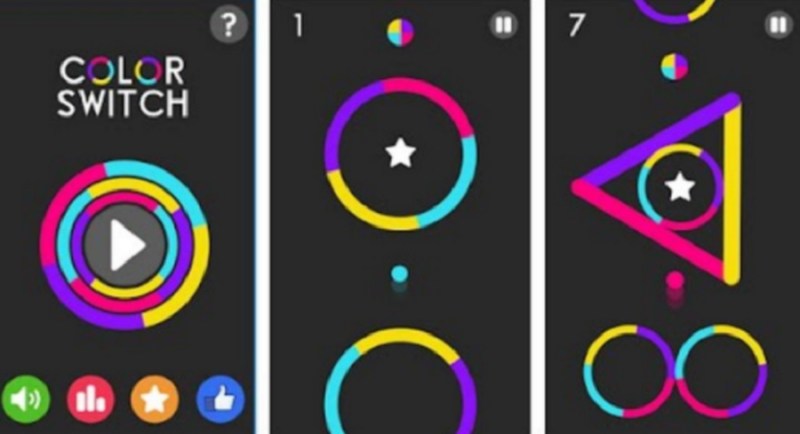
Above: Color Switch screenshots.
GamesBeat: Where did this idea for Color Switch come from?
Reichelt: There are two books that were and still are the foundation of my game design schooling. One of them is called Thinkertoys, by Michael Michalko, and the other one is called The Art of Game Design, by Jesse Schell.
Thinkertoys is really the key to giving me the tools to think of the idea. It’s a book full of creative thinking techniques. They show you to take apart any existing ideas and combine them with other idea to form new ideas based on those inspirations. Every technique is based on the concept of conceptual blending. When you take two unrelated concepts and put them together to make a new concept, you blend them together and have a new hybrid idea.
If you think about it, it works on a biological level. Two parents create a child. Water is made of hydrogen and oxygen. On their own they’re not water, but when you blend them together, you get water. All the elements are like that. Not only does it work on a conceptual level with creating ideas, but it works on a physical level as well.
I started using these techniques back in 2010, when I found this book. I’d used them off and on, but I never had something specific to use them for. They’re really geared toward helping you solve problems. When I got into games, my main problem was designing games that people would enjoy. I would always use these techniques for that.
After I made 40 games and they all failed, I thought, “Okay, I’m going to simplify everything.” I wanted to simplify the themes I focused on, simplify the type of game, not try to make any kind of elaborate game. I wanted to make something as simple as possible. When I thought along those lines, I realized that I also wanted to make a game that could be around in 40 years. What are games like that? Super Mario Bros. Pac-Man. Uno. Simon.
I put all those in front of me and I used Thinkertoys techniques to take them apart into their attributes. There were a few common things I saw in all four of those. One was the idea of color switching. In Super Mario Bros. you get the flower, your outfit changes colors, and you can spit fireballs. Uno has the wild card that changes the color you can place on the deck. Simon has the color switching pattern you have to memorize, and it gets more elaborate as you play. Pac-Man, you get the big power pellet and the ghosts change colors. That lets you know you can eat them.
I put that down, and then other things—they all have around four colors. Most of them have a black background. There were other key elements. I had all of these attributes that–again, when I tore all these ideas apart and found these attributes and put them together—sometimes your brain conceptually blends things without having to even think about it. I remember color switching, four colors, dark background, all that in front of me on paper, and then unconsciously I just blended them.
I saw this rotating circle above my head made of four colors and I thought, “Well, what if I had a ball that had to go through a certain color?” One thought leads to another. Maybe it has to change every time. By using those techniques, tearing those ideas apart and putting them back together in a new configuration, and making the color switch element the main theme of the game, that’s how I came up with it.
GamesBeat: That’s pretty elaborate. A lot more than just, “I thought of something one day.”
Reichelt: Even when people say they just thought of something, that’s still conceptual blending. They’re just not doing it consciously. Like I said, even in that moment, I didn’t 100 percent consciously come up with it. It’s just that when I put those in front of me, my brain did it. We’re taking in information all the time. When you talk with someone, you blend their thoughts with your own. If you go to a museum or read a book—sometimes those thoughts just naturally come to you without having to think about it, but their tools you can specifically use and get better at using to be more in control of the ideas you think of, rather than just waiting for something to pop into your head.
GamesBeat: Have you had a chance to talk with other game developers about that process? Does it seem like this conceptual blending is a well-known thing?
Reichelt: It’s actually a very little-known thing. I went to Jesse Schell’s school and talked to his students, and I don’t think anyone there knew about it. I’ve talked to different audiences. To me, again, it’s the foundation of what everything in the universe is built on. It’s the core of creativity. Yet so many people aren’t aware of it.
A lot of people think they’re not creative. When people are aware of how simple it can be, and how you can really be as creative as you want to be, it’s very empowering. I have talked to other game designers. I’ve talked to some schools, high schools, grade schools, and shared these tools that I learned along the way from books and other things.
That’s one of the best side effects of having this game be a success. When you talk to kids, all of them are playing this game. They’re ready to listen to what you have to say. I like to share with kids this idea that they can learn from their failures. They can be as creative as they want if they work at it. If you have an idea of where you’d like your life to go, what everyone might think is a pipe dream isn’t at all. It might take some effort to get there, but you can accomplish something if you use these techniques consistently over time.

Above: David Reichelt parked cars as a valet attendant while making games.
GamesBeat: Were there other things that were interesting parts of the learning process in making Color Switch?
Reichelt: One thing was to look outside of your industry. Often the idea you need lies way outside of what you’re studying. That’s why it’s good to study everything, a little bit of—you don’t have to be an expert in everything, but you should educate yourself on a variety of topics you can pull from.
My background as a magician was what got me on the right track to even think of Color Switch. When I perform a magic trick, I know how powerful surprise can be in the presentation of the trick, and how powerful it can be to get a reaction from people. I wanted to make a game that surprises people all the time. From that thought, well, how about if I have a character that’s always changing? That turned into a ball that always changes color, but before I got to that specific theme, it was my experience as a magician and wanting to surprise people and putting that into a game.
It’s not just about looking at what everyone else is doing in your industry. It’s about looking outside of that for inspiration. If you ever hear Steven Spielberg talk about filmmaking, he says that if you want to be a great director, you want to watch every film from the silent era until now, because there’s something to learn from every one of them. When I started watching a lot of older films, I would see shots that Spielberg does today. You could see that he had studied and taken something and used it in a different way.
Always looking for inspiration from a variety of sources, always having the mindset of being a student—no matter how much success I may have with this game, I’m always telling myself in the back of my mind that I don’t really know much about games, so I’d better keep studying. By being a continual student, you’re always going to improve your thought process. If you do that, you’ll always improve what you do, and therefore improve the results you get.
That goes back to—there’s the famous quote about insanity. Doing the same thing and expecting a different result. The one key piece that people miss is that you have to keep putting new information into your brain. Then your actions will change and you won’t do the same things. Being a constant student, no matter what happens in your life, will always give you new and better opportunities over time.
One last thing would be, just being willing to fail. I realized that by being willing to fail, without any limitations, is how I got to my game. Between game 40 and game 41, which was Color Switch, there was a year’s time. I just got frustrated. I decided to take a break and rethink this whole thing. But I never gave up. That was never an option. If I had given up, I would never have known that the next one would be the one that would allow me to do this full time.
Once you’ve found what you’re passionate about—if you’re not passionate about something, there’s no way to succeed at it, because you won’t put in the time and effort to improve and become proficient at what you do. By being passionate about something and being willing to fail as many times as it takes, you set yourself up for success.
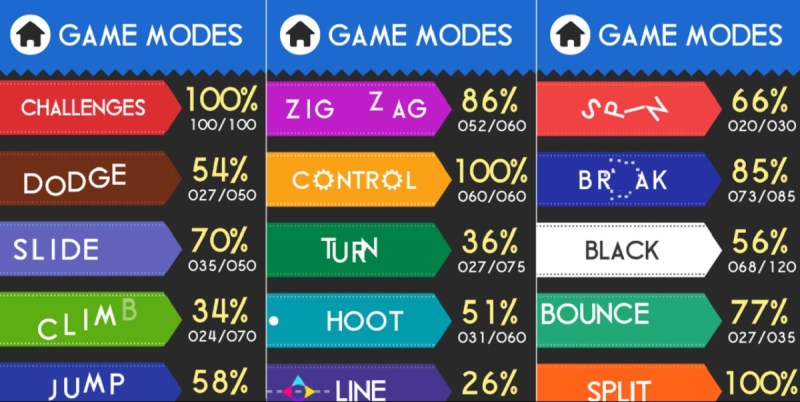
Above: Color Switch crossed 100 million downloads a while ago.
GamesBeat: How did Color Switch go to market? How did Fortafy come into the picture?
Reichelt: From my experience of making games, I knew that I didn’t know much about marketing. Color Switch was the first time I made a game where I couldn’t stop playing it. I think I played it for four hours the first time I put it on my phone. I knew I had something here.
I started shopping around. I didn’t know much about the industry. I was just making games in my apartment. I’d joined a forum, buildbox.com, and I posted to the other forum members, “Hey, I think I’ve made a game that could do well. Does anybody know any publishers I could contact that, how I could go about that?” My buddy Colin, another Buildbox developer based in Canada, said, “Yeah, I know a guy named Zeb you can show that to.”
I found this guy Zeb, Zeb Jaffer, on Facebook and messaged him. I’d made a trailer. I used to study film editing, so I could make my own videos and trailers for things. I showed him a trailer and he said, “I see games every day at this company, and this game, I’m telling you, we can get this to number one.” At first he helped me shop it around to different publishers, trying to be a middleman, but none of them were interested in Color Switch. He told me that he and his friend were going to start up their own company, Fortafy Games, later in the year, and if I was willing to wait I could publish with them.
I made the game back in June 2015, and I might have shown it to him as early as July. It was five or six months before we launched it with them, and everything happened after that.
GamesBeat: It’s way past—is it 200 million downloads now? Where is it now?
Reichelt: We were at about 200 million. Recently the game went off the app store, back in December. I had a two-year licensing deal with Fortafy Games, and I had the option to either continue it or to just go my own way. I decided that now I could afford to have my own studio. I had a lot of ideas that wanted to do with the brand and the game. I wanted to be more in control of that. I decided to go my own way. They had it on their account and they decided to take it off.
I had to have my team rebuild it, which we’re mostly done with now. We’re doing a lot of new things with the game. We’re putting up an improved version of what we had before. I believe we’re launching next month sometime.
GamesBeat: Right now, is there no way for people to play it unless they already downloaded?
Reichelt: Right. If they have it on their phones, they’ll have it there. There are tons of clones on the app store, and we’re always taking those down. Come April we have a pretty massive marketing campaign we’re going to be doing. We’ve had a lot of fans reaching out and asking where the game is, when it’s going to be back.
At first it was kind of a scary thing. A product that everyone knows does not usually go off the market for such a long time. But I actually think it’s going to work out well. We’re not worried about putting up the exact same thing. A lot of the ideas I had for the sequel I was going to do, I’m just putting them in this game. A lot of feature requests, a lot of game modes I was holding off on until I had my own team to make it. We’re launching with a lot of those modes.
The great thing about the game is it’s so minimalist. Unlike, say, Angry Birds—they were so specific with the cartoon bird characters. It’s harder to stretch that into different things. We’re as minimalist as you can get, just shapes and colors. We’re able to reinvent that in an infinite number of ways. We have a backlog of, I think, 40 mini-games that I’ve developed. We’ll come out with those every month. We’ll launch with four or five mini-games, and most of them are new.
It’s a chance to put all these new improvements in the game. Even though people may have lost their progress with the old version, we’re not just giving them the same content. They won’t be disappointed unlocking the same stuff. We’re giving mostly new content, aside from the core game, which is what became popular in the first place before we even had mini-games. We’re focused on all this new content and a lot of features that people have requested.

Above: David Reichelt had to save lives in Iraq as a medic.
GamesBeat: That’s an unusual feature of your contract, that it expired. I don’t usually see that happen.
Reichelt: I couldn’t say—they’re the only company I ever did a contract with. I literally came from cleaning swimming pools to all of a sudden I have a publishing deal with a game company. I had no prior experience, and to this day—I do contracts for my company with other artists and so on for other things, music and whatnot, but—that’s just how it ended up being. It was two years, and then auto-renewal or I would let them know ahead of time if I wanted to not continue it.
Fortafy has come out with three other games, I think, but none of them have had the same success as Color Switch. It goes back to a book I read by William Goldman, the screenwriter. A studio actor needs an A-list actor, but that actor needs a studio too. You need a marketing machine, but you also need a great product.
After I made all these games I knew I’d made something I thought was great. Fortunately other people thought so too when we published it. They had just formed that company, and I think I was the second game they had. They had Thug Worm, and then we did this, and it blew up from people sharing it and tweeting about it and so on. Then we just stayed on the top of the app store charts for two years. That’s where we’re focused on getting back to after we launch. It’s exciting to finally get it back out there.
GamesBeat: From your share of this, can you characterize how well you’ve done? Did it make you a million, millions, tens of millions of dollars? I don’t really have a clue as to what level this is at.
Reichelt: It definitely enabled me to do this full time and hire—I think I have about seven employees now, so I can fund all that. I’m reinvesting a lot of my money right back into the company. I know that I have a product that not only I think is great, but I talk directly with a lot of other game companies who are interesting in combining their characters with my IP, and we’re going to be doing that later in the year. I can’t say who that is yet, because nothing’s official.
We’re not just putting the game back out there as it was. We’re doing a lot of things with partners now. This is a different situation, because we now have a proven product, a worldwide success with longevity. We’re able to come to the table and get all these really fun and exciting deals with different partners, ranging from other game companies, getting the game in places that didn’t have it before—it’s pretty exciting to redo all of this. We have a lot of stuff happening with music.
We’re also expanding on what Color Switch is as a brand. I think we have five or six planned titles outside of this game, but all under the Color Switch brand, all different types of gameplay. I’ve had various merchandise ideas ever since soon after the game came out. Now we’re finally exploring those. It was important for me to be control of this IP I created, so I held off on a lot of those things until the time was right. One thing you learn as a medic is patience. I’ve been patient, and now this is the year where a lot of that is going to happen.
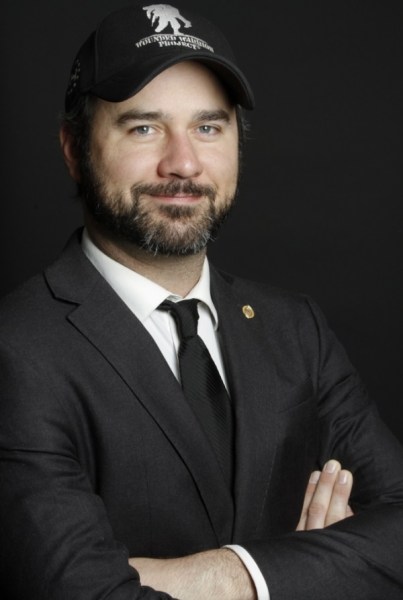
Above: David Reichelt is coming out with all-new Color Switch content.
GamesBeat: How do you feel about whether you want to keep doing the original games, 40 more original ideas, versus exploiting on Color Switch as much as you can?
Reichelt: I look at it this way. Games are not the main thing I’m passionate about. I’m passionate about creating things. That’s games, music, film. I like to change what I’m doing over time. The next couple of years, I’ll be focused on games, but I want to open my own studio and start making films and whatnot. That’s what I was trying to do before games, and now the games enable me to do these other things.
With games, I think of it as a business first and foremost, before I think of myself as an artist. If I were thinking of myself as an artist, I would want to create more types of IP and test other things in the market. But if I think of it from a business standpoint, I have a product, a brand that so many people already enjoy. It makes more sense to expand on that. Like I say, we’re so minimalist that I have a lot of specific ways to stretch the brand – not just games, but other ways as well.
It makes more business sense to focus on that instead of, “Can I create another IP that will be popular in the market?” It seems like a better use of my time and resources to focus on what has already proven to be this phenomenon and keep growing that over the next couple of years. When I eventually transition to something else, I’ll be in more of a hands-off role where I can come to my company so many times a year to give direction on various things. It just makes more business sense to me to focus on something that we’ve already shown in the market to be a very popular brand.
GamesBeat: As far as learning more about the mobile game industry, now that you’ve had this success, what are your thoughts on the whole landscape out there?
Reichelt: I like to focus on a lot of the history of games. If you were at my house, you’d see that I have—here’s a pop quiz for you. Do you know what the first home video game console was?
GamesBeat: I had an Intellivision, but there were more before that. It was the Magnavox, right?
Reichelt: Yeah, the Magnavox Odyssey. People call my house a video game museum. I have everything going back to the Odyssey. I have, I think, 1,500 Nintendo games. To me these are all resources for study. I like to study how games are made. I have books on the history of Atari, Atari game designers, the history of Nintendo, the history of games in general. How they developed Space War at MIT before Pong. I’ve invested a lot into more studies in games.
I try to come at it from many perspectives. I study everything that’s been out since games came to be – playing games, studying the history of games, the game designers, the companies – and then currently my mobile game research—I’m the guy who just draws the circles. That’s my main skill. I’m always focusing on the current games. My routine today is I go to the app store, download all the latest games, look for trends, look for the popular game mechanics people want to play with, look at the top-grossing games.
To this day I don’t know much about ad networks or marketing techniques. I have a general idea. But I would never call myself an expert on that. I focus on design, playing games, studying history. A lot of the stuff that happens on the app store now already happened in the ‘80s with the arcade industry and the early console industry. A game comes out that’s popular. People get inspired by that and come up with their own games. People clone a game directly. There were clones of the original Pong machine. A lot of stuff that happens now, digitally, happened physically before. It’s good to study the history of all these things.
I was at a conference recently where a speaker said, “If you want to make a billion dollars, you need to solve a problem for a billion people.” Think about video games. It’s a multi-billion-dollar industry, because you solve a universal problem for people. It may not be a life or death problem, but it’s a problem. Boredom is a problem. People have all these moments of boredom. Maybe they have a job they don’t like, or they’re on the bus. Now we have a technology that can put entertainment in people’s hands and solve that problem.
Connection is another problem. Social games enable you to connect with people that you wouldn’t otherwise connect with before. They may be people in other countries, or new friends. People have gotten married through games. Games do solve problems of connection and empowerment. I feel empowered by my avatar, this thing that has special abilities and can do things I can’t do in the real world. To me those are core ideas: empowerment, connection, and boredom. Those are keys to why this is a multi-billion-dollar industry.
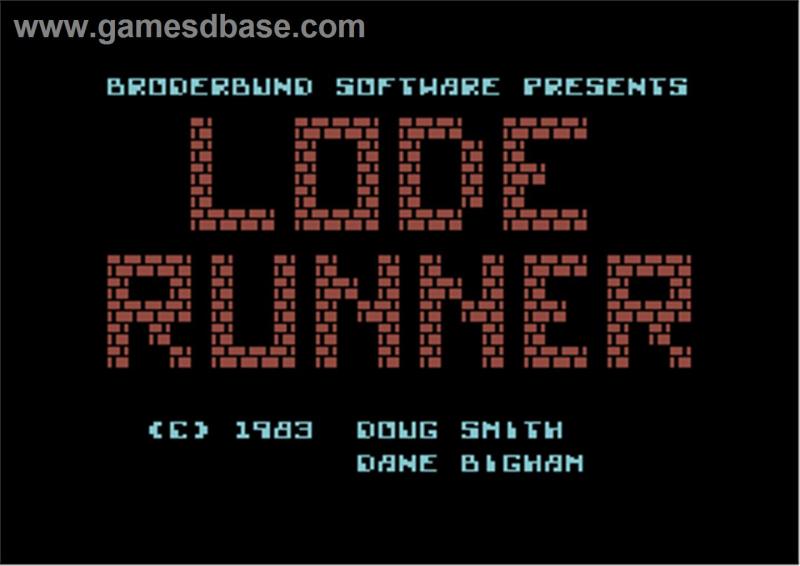
Above: Lode Runner from Doug E. Smith.
GamesBeat: Do you think Fortafy was helpful in those early days?
Reichelt: I look at it like this. They were the marketer, and they definitely helped get the game out there. There’s no doubt about that. But if any company with a good marketing machine marketed this game, I’m sure we would have had the same results. They’ve come out with four other games and none of them have had the same success as Color Switch.
What I always say, the most important thing in games for me is design. If I can improve my design skills and design something that connects with people, all that other stuff falls into place. I can’t remember which company it was, but they told us—Fortafy Games has social influencers, but not first-tier social influencers. The game had to be that good to get that big. You do need a marketing machine and they did help out with that, but I think we would have blown up with any company that had a good marketing machine to get the game out there.
If I just launched the game on my own, though, I wouldn’t have been able to get it in front of enough people. Marketing is essential. Working with Fortafy, they definitely helped me get the game out there, and it took off from that point.
GamesBeat: Back when Color Switch was just starting to take off, was there anything you noticed that really helped it become viral? A bit of advertising, or some influencer getting hold of it, anything like that to suggest why people were picking it up?
Reichelt: Social media definitely has been key. I know there were social influencers working with Fortafy that made videos. But a lot of people just started talking about the game, sharing it on Twitter, using social media to spread word of mouth about the game.
If you think about it, we’ve been conditioned to the mechanic of color switching since Pac-Man. Everyone’s familiar with it whether they know it or not. I just presented it as the main theme of the game. No one had seen it done that way. It was exciting for people to play. It’s so minimalist that it’s not really for boys or girls or kids or adults. Anyone can play it and not look silly doing it. That helped with people wanting to share it. I’ve met parents and whole families that play it. It’s always a different group of people that I meet playing it.
What’s really cool, I’ve met so many people just from—I have shirts I made with the Color Switch logo on them and the name on the back. I meet so many people who play it in my travels just by wearing that shirt. It’s fun to see people get excited about the game.
I’ve talked about this sometimes. The main theme that I focus on is adapting to challenges. I think this is another reason so many people connected with the game and got excited about it. My game takes the idea of adapting to challenges in life and presents it in a very minimalist way. That’s something everyone can relate to. It’s a universally resonant theme, adapting to constant challenge in your life, whether it’s school or work or family. I took that theme and minimized it.
Again, maybe people aren’t aware of that, but that’s essentially what the game is about. Every obstacle is a little faster, a little smaller, a little more complex.
GamesBeat: It seems like a lot of conversation would have been about how hard the game is.
Reichelt: That comes from a game design concept called the flow state. All that means is, if the game is too easy, people won’t play it, and if it’s too hard, they won’t play it either. If it’s too hard they think they can’t improve their skill to play it. If you make the game increasingly challenging in the right increments, then you get people in that flow state, where they’re playing the game and willing to keep playing it because they can feel themselves getting better as they go.
That comes from the spacing of the obstacles, the side of the obstacles, the shapes and combinations of shapes. They get a little more complex as you play it. I was focused on the idea of that flow state when I designed the game.

